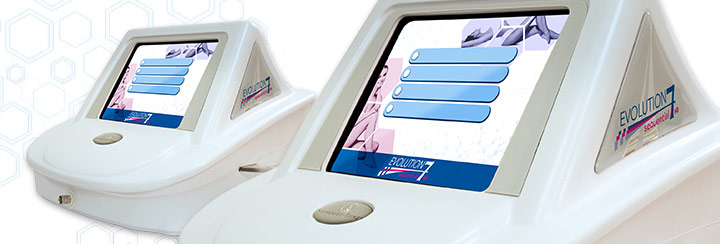News & Events
Endocrine Perspective
By Geoffrey P. Redmond, M.D.
Dear Dr Redmond: I've read about polycystic ovary syndrome (PCOS) but what else can cause hirsutism? From what I've read about it, many of the women I treat do not seem to have PCOS.
You are quite right; PCOS is not the only cause of hirsutism. PCOS is the cause that has received the most attention, so medical articles often give the impression that this is the only cause. But there are several others. The best way to explain these is to review the steps in the process which leads to increased hair growth, and consider what can happen at each step to cause the increase.
So-called "sexual hair" grows in response to androgens - the so-called "male hormones." This term is a little misleading because women have active levels of androgens in their blood, just as men have estrogen in theirs. Testosterone is the most active androgen, but there are several others such as androstenedione and DHEA. (DHEA is usually measured as the closely related form DHEA-S.)
Androstenedione and DHEA them-selves do not affect hair growth but they are converted by the body to testosterone, which does.
Both the ovary and the adrenal gland release testosterone. If the blood level of testosterone is elevated, it is important to find out whether it is coming from the ovary, or the adrenal, or both. We cannot generalize, but need to do tests to see which is the source.
The best test for determining where the testosterone is coming from is the dexamethasone suppression test. Dexamethasone (similar to cortisone) is given for about a week to suppress the adrenal. Any testosterone remaining in the blood at the end of the test must be coming from the ovary. For example, if the testosterone is 75 before the test and 60 at the end of it, most of the testosterone is coming from the ovary. But if the post-test value is 15, most of the testosterone is adrenal in origin.
Now, let's consider polycystic ovary syndrome again. (An older name for this, still used sometimes, is Stein-Leventhal syndrome.) This is often the diagnosis when the ovary is the source of the extra testosterone, and this is where much confusion enters in. PCOS is polycystic ovary syndrome (a collection of features of a medical condition) usually defined as oligomenorrhea (infrequent periods), anovulation (failure of the ovary to release an egg cell), obesity and hirsutism. The extra weight tends to be on the upper body with the hips and legs usually being thin.
Regular readers of this column are aware that I do not like the term "poly-cystic ovary syndrome." One reason is that it scares patients, often unnecessarily. The other reason I don't like labeling women as having PCOS is that most affected women have only some parts of the syndrome. If a woman does have all the features listed above, it is reasonable to make the diagnosis of PCOS. If she has only some, it is better to term her condition "ovarian androgen excess."
I do need to add that women with PCOS, who are overweight, are often associated with insulin resistance and diabetes. When high testosterone levels seem to begin at or after menopause, the cause is often a condition called thecal cell hyperplasia. The theca cells are in the ovary and. make testosterone. The cause of this is unknown; it may be a late form of PCOS.
Sometimes a woman has ovarian androgen excess but lacks most of the features of PCOS - a situation for which there is no specific term. The same is true when the testosterone comes from the adrenal. The term "late onset adrenal hyperplasia" simply means that the adrenal is not making its hormones in the right proportions. There are severe hereditary forms, which are usually present at birth. Some forms have specific lab-oratory abnormalities that will con-firm the diagnosis, but in mild cases the tests are not specific. This means that a small number of adult women with hirsutism have this so-called late onset adrenal hyperplasia. But for the common, milder forms, this term is not really appropriate.
So, just as we are left with ovarian androgen excess as a diagnosis, we also have adrenal androgen excess. These terms are not very specific but I prefer them because they don't imply that a woman has a more severe disease than she really has.
Now I need to add a third source of hirsutism besides the ovary and adrenal. This is the hair follicle itself. Some people have follicles that are so sensitive to testosterone that even nor-mal levels stimulate them. In fact, this is by far the most common reason for increased hair growth in women. Women with sensitive follicles do not have a hormonal disorder at all. Their ovaries and adrenals are working fine.
So this is the not-entirely-satisfying state of affairs with hirsutism diagnosis.
Dr. Redmond is president of the Foundation for Developmental Endocrinology, in Cleveland, Ohio, and author of the book The Good News About Women's Hormones. Questions for Dr Redmond should be mailed, faxed or e-mailed to: International Hair Route, 106 Lakeshore Road East, Suite 212, Mississauga, ON, Canada L5G 1E3. Fax (905) 271-9748.
Reprinted from INTERNATIONAL HAIR ROUTE, vol. 42, February 2000
Want a New Career?
The American Institute of Education can put you on the fast track to a rewarding career. Stop dreaming about it and make it happen at AIE!
Want to learn more? Read Why Become An Electrologist to see why AIE's electrology program is right for you!
Electrology Program
AIE'S ELECTROLOGY PROGRAM is right for you!
The American Institute of Education can put you on the fast track to a rewarding career as a licensed electrologist.
Stop dreaming about it and make it happen at AIE!
Want to learn more? Read Why Become An Electrologist to see why AIE's electrology program is right for you!
In just four months, you could be earning $70 to $130 per hour and working whenever and wherever you want. AIE's Electrology Program can make it yours.
Electrolysis Reimagined

For many years those of us associated with electrolysis understood that epilators operated at a frequency of 13.5 megahertz. About twelve years ago Dectro International introduced its Platinum line of epilators that operate at 27 MHz. Our horizons were expanded. Their claim is that hair is permanently removed 25% faster and with a degree of comfort previously unheard of. So what are we to make of an epilator that operates at 6.68 MHz?
Meet the Graduates

At the American Institute of Education, we let our electrolysis graduates speak for us! Our state-of-the-art training leads to exciting, financially rewarding careers. Our graduates are some of the most sought after electrologists in the market.
Testimonials
I really loved school at American Institute of Education and I selected it because I heard it was the best program. The experience was amazing even from the first phone call with Ron where tuition, scholarships, program hours flexibility, online access, and timely information is all top notch. The curriculum is national standard and includes all the latest and greatest topics that are hot in the industry.
- Russ Cameron, owner/manager
Skin Sensations in Las Vegas
Follow AIE Electrology!
Connect with us on Facebook:
@electrologyschool





SHARE